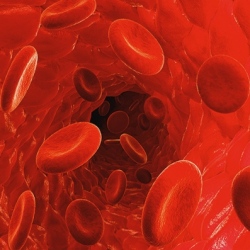
University of Virginia School of Medicine have discovered that a gene called Oct4, which scientific dogma insists is inactive in adults, actually plays a vital role in preventing ruptured atherosclerotic plaques inside blood vessels, the underlying cause of most heart attacks and strokes.
The researchers found that Oct4 controls the conversion of smooth muscle cells into protective fibrous “caps” inside plaques, making the plaques less likely to rupture. They also discovered that the gene promotes many changes in gene expression that are beneficial in stabilizing the plaques. In addition, the researchers believe it may be possible to develop drugs or other therapeutic agents that target the Oct4 pathway as a way to reduce the incidence of heart attacks or stroke.
Could impact many human diseases, regenerative medicine. The researchers are also currently testing Oct4′s possible role in repairing cellular damage and healing wounds, which would make it useful for regenerative medicine.
Oct4 is one of the “stem cell pluripotency factors” described by Shinya Yamanaka, PhD, of Kyoto University, for which he received the 2012 Nobel Prize. His lab and many others have shown that artificial over-expression of Oct4 within somatic cells grown in a lab dish is essential for reprogramming these cells into induced pluripotential stem cells, which can then develop into any cell type in the body or even an entire organism.
“Finding a way to reactivate this pathway may have profound implications for health and aging,” said researcher Gary K. Owens, director of UVA’s Robert M. Berne Cardiovascular Research Center. “This could impact many human diseases and the field of regenerative medicine. [It may also] end up being the ‘fountain-of-youth gene,’ a way to revitalize old and worn-out cells.”
The discovery is described in a paper published online in Nature Medicine. The work was funded by the National Institutes of Health, the Russian Science Foundation, the Russian Federal Agency of Scientific Organization, and the U.S. Department of Defense.
